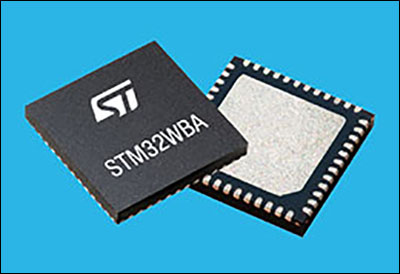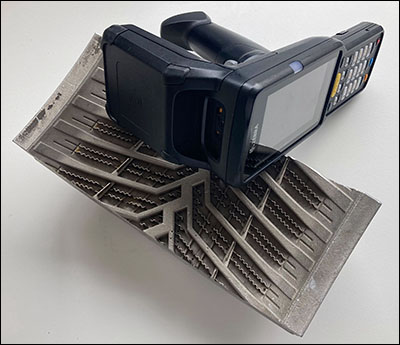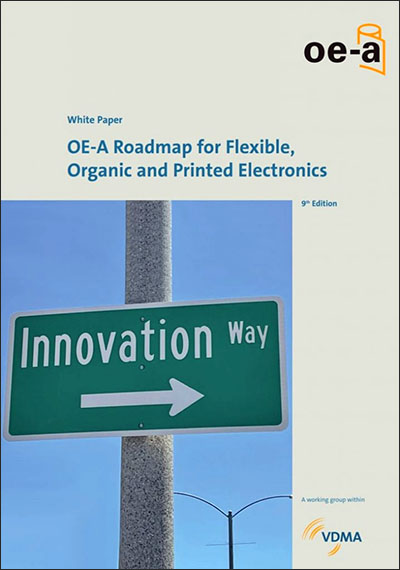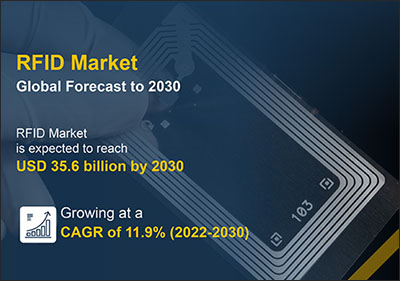RFID Journal LIVE! 2023 will feature end-user companies discussing RFID’s use in various industries, as well as exhibitors offering tagging solutions for multiple applications. To learn more, visit the event’s website.
- Congresswoman Intros IoT Legislation for Smart Device Use
- NXP Toolset Enables Software Development for Embedded Apps
- STMicroelectronics Unveils BLE Microcontrollers for IoT
- SimplyRFiD Launches RFID Tag for Metal, Liquid Products
- FineLine Receives Patent for RFID Mold-Management Solution
- Ericsson IoT Accelerator Provides Connectivity for Lyft E-bikes
- OE-A Publishes Roadmap for Flexible and Printed Electronics
- MarketsandMarkets Releases Market Research for RFID, RTLS
Presented here are recent news announcements in the radio frequency identification and Internet of Things industries.
Congresswoman Intros IoT Legislation for Smart Device Use
Congresswoman Suzan DelBene (WA-01) has introduced the Internet of Things (IoT) Readiness Act, intended to prepare the United States for the continued growth of smart devices and technologies that connect to 5G networks. IoT devices, ranging from fitness watches to traffic cameras, require significant 5G spectrum capacity to share data such as time, location and temperature. According to a prepared statement from DelBene’s team, 5G spectrum is a finite resource, and if the available capacity cannot accommodate all devices within a vicinity, the signals can interfere with each other, causing them to fail.

Congresswoman Suzan DelBene
The IoT Readiness Act directs the Federal Communications Commission to provide Congress with the data needed to be prepared for the continued growth of this technology and its connectivity needs. When smartphones were first introduced, the number of devices that could access the Internet increased dramatically, DelBene’s team explained, noting, “Cellular networks became overwhelmed, and the FCC had to go through the lengthy and burdensome process of reallocating spectrum. Now, IoT devices are facing the same problem.”
The bill, H.R. 904, reads, “In order for the federal government to properly address spectrum requirements, Congress needs to understand the full scope of future spectrum demand.” According to an article published by MSN, “The bill would instruct the FCC to determine growth trends for 5G networks and IoT devices, and whether that growth will create a need for more spectrum. The FCC would have 180 days to compile the data for Congress, and then the commission would track and submit updated reports every two years.” The bill’s full text can be found here.
“DelBene introduced similar legislation in 2021,” the MSN article reports. “As House Resolution 981, it was referred to a subcommittee of the House Energy and Commerce Committee during the 117th Congress, but it advanced no further. So far, DelBene’s new bill has no cosponsors. Her previous bill was co-sponsored by John Katko, a New York Republican who did not seek reelection in 2022. The bill will be referred to the House Committee on Energy and Commerce, which is chaired by Rep. Cathy McMorris-Rodgers (R-Wash.).”
“IoT and smart devices are growing in popularity in our homes and businesses to improve safety, efficiency and convenience,” DelBene said in a prepared statement, “but that would grind to a halt if we do not have enough 5G spectrum available to handle the demands of this growing technology. This legislation would require the FCC to assess current spectrum supply and determine how much is necessary to meet the demands of IoT growth in the future. The United States can’t afford to wait around while other countries are implementing IoT readiness plans. The time for action is now.”
NXP Toolset Enables Software Development for Embedded Apps
NXP Semiconductors has announced its MCUXpresso toolset, designed to streamline software development for complex embedded applications. The toolset adds an integrated development environment (IDE) to enable the use of open-source projects, simplified access to specialist middleware, and hardware abstraction to allow code reuse across NXP’s range of microcontroller units (MCUs).
MCUXpresso features tools and resources to provide developers with scalability, usability and portability, the company reports, allowing them to develop complex embedded applications. The toolset expands on existing features with new IDE offerings, including a custom-built extension for Microsoft’s Visual Studio Code, partner code delivery using Open-CMSIS-Packs, and an Application Launch Pad for interactive access to application software and documentation from NXP.
 “Today’s developers want more choices and open-source options rather than being locked into proprietary systems,” said Charles Dachs, NXP’s senior VP and general manager for industrial and IoT edge, in a prepared statement. “The new MCUXpresso toolset gives developers greater flexibility and control of their journey, delivering the tools and resources they need to easily accelerate software development. By expanding access to open-source communities and simplifying integration of specialized partner software, we’re helping developers drive innovation, scale their projects, bring complex products to market faster, and easily migrate between NXP devices and platforms.”
“Today’s developers want more choices and open-source options rather than being locked into proprietary systems,” said Charles Dachs, NXP’s senior VP and general manager for industrial and IoT edge, in a prepared statement. “The new MCUXpresso toolset gives developers greater flexibility and control of their journey, delivering the tools and resources they need to easily accelerate software development. By expanding access to open-source communities and simplifying integration of specialized partner software, we’re helping developers drive innovation, scale their projects, bring complex products to market faster, and easily migrate between NXP devices and platforms.”
The toolset includes MCUXpresso for VS Code, intended for fast and responsive source-code editing. This IDE is designed to boost flexibility, NXP explains, by expanding build-system choices, including those favored by open-source projects such as Zephyr and Matter, while maintaining support for developers using the traditional MCUXpresso software-development kit. Developers have access to existing IDE options, including MCUXpresso IDE, IAR Embedded Workbench and Arm Keil development tools.
All IDEs in the MCUXpresso ecosystem feature Open-CMSIS-Pack support for code delivery, enabling ecosystem partners to streamline product evaluation and integration for customers, and allowing developers to browse a collection of off-the-shelf software. The Application Launch Pad serves as a central repository for application design resources, including application software packs, application notes and application code examples, with an intuitive portal to browse available software.
STMicroelectronics Unveils BLE Microcontrollers for IoT
STMicroelectronics has announced that its STM32WBA52 MCUs combine Bluetooth Low Energy (BLE) 5.3 connectivity with ultra-low-power modes, improved security and a selection of peripherals familiar to STM32 developers. The technology is designed for IoT device developers seeking to add wireless capability, reduce power, strengthen cyber-protection and boost processing at the edge, the company reports.
 Targeted applications include smart homes, industrial lighting, sensors, electrical switches, gateways and portable medical devices. The STM32WBA52 is available now in the mass market. It contains an Arm Cortex-M33 core operating at 100 MHz for increased computing power, along with STM32 peripherals. The STM32Cube ecosystem is intended to simplify migration from existing STM32WB and general-purpose STM32 MCUs, the company reports. It features the STM32CubeWBA MCU package with an embedded BLE 5.3 protocol stack, and it builds on existing profiles from the STM32WB series for portability purposes.
Targeted applications include smart homes, industrial lighting, sensors, electrical switches, gateways and portable medical devices. The STM32WBA52 is available now in the mass market. It contains an Arm Cortex-M33 core operating at 100 MHz for increased computing power, along with STM32 peripherals. The STM32Cube ecosystem is intended to simplify migration from existing STM32WB and general-purpose STM32 MCUs, the company reports. It features the STM32CubeWBA MCU package with an embedded BLE 5.3 protocol stack, and it builds on existing profiles from the STM32WB series for portability purposes.
The STM32Cube ecosystem includes the STM32CubeMX peripherals configurator and code generator, the STM32CubeMonitor-RF radio-performance tester, and STM32Cube.AI desktop and cloud versions for artificial intelligence. The ecosystem is designed to accelerate application development and validation. To ease prototyping, a dedicated Nucleo board, NUCLEO-WBA52CG, is available for the STM32WBA52.
The integrated ultra-low-power radio provides RF output power of +10 dBm, enabling communication over long distances at data rates of up to 2 megabits per second. The STM32WBA MCUs can support up to 20 simultaneous connections, the company reports, and the platform comes with secure software based on Trusted Firmware for the Cortex-M.
SimplyRFiD Launches RFID Tag for Metal, Liquid Products
SimplyRFiD has announced its Popsicle RAIN RFID tag, which it designed to facilitate RFID tagging and tag selection. Traditional RFID tags obscure text when placed on products, the company explains, or they can fail to work on products containing metallics or liquids. Designed for Shopify inventory-management systems or modern RFID inventory control, the Popsicle is priced for high-volume supply chain use.

The Popsicle tag is available now, according to SimplyRFiD. The solution includes a clear adhesive area designed so as not to obscure product text, allowing the tag to be placed over descriptive text and still allow consumers to view product details. The non-adhesive RFID flag stands off from an item’s surface, enabling the tagging of products containing metal or liquids.
Additionally, SimplyRFiD reports, the RFID tag area contains a synthetic white face for printing human-readable text or adding a barcode. According to the company, the Popsicle tag works in standard RFID printer-encoders for low-cost printing and encoding.
FineLine Receives Patent for RFID Mold-Management Solution
FineLine Technologies, a provider of variable data tags, labels and RFID solutions for the tire and rubber manufacturing, automotive, healthcare and retail industries, has been granted a new patent by the U.S. Patent and Trademark Office. The patent, #11,453,186, focuses on mold management, a critical process for the tire and rubber manufacturing industry. The technology is known as the Smart Mold Management Solution.
 Proper mold management is crucial to the overall quality of a tire, FineLine notes, accounting for approximately 35 percent of the tire’s quality. The solution utilizes embedded RFID tags for critical mold components, for automatic checks of containers, segments and sidewall plates assigned hierarchal relations. The system checks the sequence of segments within a container, providing a searchable, identifiable and status-assigned mold register that automatically stores mold location, production status and maintenance records. The use of RFID also enables automatic association between mold, bladder, press machine and individual tires.
Proper mold management is crucial to the overall quality of a tire, FineLine notes, accounting for approximately 35 percent of the tire’s quality. The solution utilizes embedded RFID tags for critical mold components, for automatic checks of containers, segments and sidewall plates assigned hierarchal relations. The system checks the sequence of segments within a container, providing a searchable, identifiable and status-assigned mold register that automatically stores mold location, production status and maintenance records. The use of RFID also enables automatic association between mold, bladder, press machine and individual tires.
The Smart Mold Management Solution can withstand harsh production mold processes, such as cleaning, preheating, production cycles and maintenance. The system generates large amounts of data so tire manufacturers can trace the relationships of critical production components and manufacturing processes, as well as determine how those relate to finished product quality and performance. The solution enables rubber producers to upgrade legacy manual processes with digital traceability using RFID technology, while maintaining backward compatibility and established design and manufacturing processes.
“We are thrilled to be delivering and implementing this innovative RFID solution with several leading tire manufacturers,” said George Hoffman, FineLine’s CEO, in a prepared statement. “At FineLine Technologies, we are committed to continuous improvement and innovation to better serve our customers in the tire and rubber manufacturing industry. Our new solution offers an enormous amount of critical data that is instantly available to our customers, improving efficiency, accuracy, and overall quality of the tire production process. This patent is a testament to our dedication to provide cutting-edge solutions to the market.”
Ericsson IoT Accelerator Provides Connectivity for Lyft E-bikes
Ericsson has announced that Lyft is using its IoT Accelerator platform to manage connectivity for tens of thousands of connected e-bikes and scooters, providing a reliable, scalable micromobility service. Ericsson’s IoT partner Deutsche Telekom, an integrated telecommunications company, provides connectivity and connectivity management for the solution, enabling real-time data transmission.
 Lyft expects to have more than 20,000 connected micromobility vehicles by mid-2023. According to Ericsson, the micromobility market is anticipated to grow at a compound annual growth rate (CAGR) of 16 percent between 2019 and 2027. Shared bikes and scooters are a primary source of transportation in urban centers, providing an efficient, affordable and sustainable way to get around. According to Ericsson, such a connected transportation ecosystem requires reliable, well-managed cellular connectivity.
Lyft expects to have more than 20,000 connected micromobility vehicles by mid-2023. According to Ericsson, the micromobility market is anticipated to grow at a compound annual growth rate (CAGR) of 16 percent between 2019 and 2027. Shared bikes and scooters are a primary source of transportation in urban centers, providing an efficient, affordable and sustainable way to get around. According to Ericsson, such a connected transportation ecosystem requires reliable, well-managed cellular connectivity.
Fast cellular activity allows e-bikes to communicate between the app, Lyft’s servers and bikeshare stations so riders can be on their way within seconds, while improving fleet-management capabilities for Lyft’s operations team, and reducing theft and loss. The IoT Accelerator platform is intended to ensure a smooth connection and user experience. With connected e-bikes and scooters, cities can offer a micromobility experience to reduce traffic congestion and decrease carbon emissions.
“In order to serve users, e-bikes need to be able to quickly, efficiently and reliably communicate with the rider’s mobile application, the operator’s back-end system, and the docking station in order to provide a seamless experience,” said Kyle Okamoto, Ericsson’s general manager of IoT, in a prepared statement. “Our continued collaboration with Deutsche Telekom will support Lyft’s rider experience with constant, affordable connectivity, while growing the reach of Lyft’s connected micromobility ecosystem.”
OE-A Publishes Roadmap for Flexible and Printed Electronics
The new edition of the “OE-A Roadmap,” provided by the Organic and Printed Electronics Association, a working group within VDMA, is now available. The key market focus includes automotive, consumer electronics, healthcare, printing and packaging, smart building and the Internet of Things. The roadmap analyzes the industry’s status and forecasts where flexible, organic and printed electronics are heading.
 “The last couple of years since the release of the previous Roadmap have seen continued innovation regarding the adoption of printed, flexible and hybrid electronics in a wide range of products and markets,” said Stan Farnsworth, chair of the OE-A Board and the chief marketing officer at PulseForge, in a prepared statement. This 9th edition of the Roadmap outlines the industry’s present status, as well as current and future opportunities, and it examines the industry’s advancing maturity.
“The last couple of years since the release of the previous Roadmap have seen continued innovation regarding the adoption of printed, flexible and hybrid electronics in a wide range of products and markets,” said Stan Farnsworth, chair of the OE-A Board and the chief marketing officer at PulseForge, in a prepared statement. This 9th edition of the Roadmap outlines the industry’s present status, as well as current and future opportunities, and it examines the industry’s advancing maturity.
In addition to updates on key technologies and capabilities, more than 100 industry experts have contributed detailed short-, medium- and long-term forecasts for markets including automotive, consumer electronics, healthcare, printing and packaging, smart buildings and the Internet of Things. In the automotive sector, for example, the use of OLED displays for curved displays, lighting concepts and touch sensors inside cars is anticipated to see continued growth.
With regard to consumer electronics, the Roadmap focuses on HMI as touch sensors are increasingly replacing mechanical knobs and buttons. Smart phones with foldable displays are growing in popularity. The use of printed electronics in the healthcare industry and the packaging market was accelerated by COVID-19. Smart patches for monitoring body functions are now more widespread, and the tracking of environmental parameters, such as temperature and shock, is of growing importance.
The seamless integration of printed electronics into objects is of special relevance for the IoT industry. RFID and NFC labels and smart tags, which can include integrated GPS, work as a strong driver. For the smart buildings industry, the increasing need for sustainability has led to significant innovations, while organic and large-area printed photovoltaic installations on roofs are becoming more prevalent.
“Printed electronics technologies have a lot to offer when it comes to sustainable production processes and materials,” Farnsworth added in the statement. “Printing, as an additive process, consumes less material and energy, and reduces the amount of waste. Printing plus related advanced processing enables broader use of recycled or ecofriendly materials to support product lifecycle circularity.”
MarketsandMarkets Releases Market Research for RFID, RTLS
 MarketsandMarkets gathers and analyzes raw data across business-to-business verticals to provide market intelligence enabling companies to improve offerings and detect market disruptions. The organization recently published a pair of market reports covering radio frequency identification and real-time location system (RTLS) technologies.
MarketsandMarkets gathers and analyzes raw data across business-to-business verticals to provide market intelligence enabling companies to improve offerings and detect market disruptions. The organization recently published a pair of market reports covering radio frequency identification and real-time location system (RTLS) technologies.
The first of these reports, “RFID Market by Offering,” indicates that the market is projected to reach $35.6 billion by 2030, up from $14.5 billion last year, and is expected to grow at a CAGR of 11.9 percent from 2022 to 2030. This report segments the RFID market by offering, tag type (passive and active), wafer size, frequency, form factor, material, application and region, and it’s available here.
The second report, “Location-Based Service (LBS) and Real-Time Location Systems (RTLS) Market,” predicts that the market size for such technologies will grow from $22.3 billion last year to $50.2 billion by 2027, at a CAGR of 17.6 percent during the forecast period. The report is segmented by component, location type, application, vertical and region, with a detailed analysis of the key industry players to provide insights into their business overviews, services, key strategies, new service and product launches, partnerships, agreements, collaborations, business expansions and competitive landscape. Those interested can find this report here.


